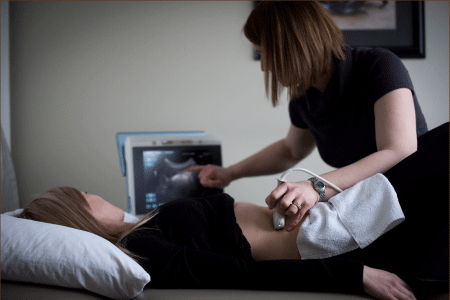Deep Abdominal Muscle Training

One of the most misunderstood concepts in the among many disciplines (medical, training, fitness etc) and the general public is the role of the "core." Very broadly, our core muscles are the group of muscles that surrounds our abdominal canister.
There are several ways to classify the different muscles involved in spinal stability, stiffness and control. It is important to make a distinction between the different functions of the spinal muscles in order to understand what is required to retrain them.
Different tasks require different activation of the abdominal muscles. Activities like planks and bird dogs enhance rigidity in the thorax and abdomen under load. These tasks can be considered high load, involve a fair amount of effort and, often, involve an increase in intra-abdominal pressure. Activities like flowing yoga, ballet and walking could be considered low load, involve mild to moderate effort (sometimes when all is well it could even feel effortless) and involve mild to moderate increases in intra-abdominal pressure.
If your challenges with your spine occur during or after low demand activities like walking, training for a high demand task like a plank as the primary treatment may not be the best strategy. Even if your back pain improves, it may mean that you have learned to use a high load strategy for a low load task. That is why we use many different assessment and treatment strategies to ensure that we are matching your training to the tasks that have the most meaning for you. We also want to match the timing, amount of muscle activity, and the strategy that you use, to the most efficient and optimal pattern for performing your activities. We want you to feel light on your feet again.
Sometimes, the muscles of the "deep core" (transversus abdominus, multifidus, diaphragm and pelvic floor) are the muscles that are in dysfunction, especially when problems happen with regular daily activities. These muscles are positioned such that they have a direct impact on control of shearing and movement of your spine and pelvis during "low-load" tasks. When these muscles are working properly they will turn on at a low level before you move your body in order to impart appropriate compression and control to your movement. These muscles often have altered function as a result of prior injury - it can even cause them to appear smaller when looked at with ultrasound or MRI - and when these muscles are not working properly you are at higher risk for recurrent pain as you cannot control your body as well and have to use a compensatory strategy for performing tasks. When these muscles are working, you are unlikely to be aware of them as they usually turn on and off automatically.
The "outer core" refers to the muscles that we can see and feel in our abdomen. These are the muscles that we can see working. The rectus abdominus (the 6-pack muscle) the obliques and the big extensor muscles on your back (erector spinae) are included in this category. These are the muscles that are most commonly targeted in "core" classes and abdominal exercise programs, even when the instructor thinks he/she is advising you to use your deep core. If you are pulling your abdomen in hard enough to feel It during fitness exercises, you are using these muscles. Sometimes these muscles become overactive after injury and contribute to back pain - this may be due to guarding or compensation for the loss of normal timing and function of the deeper core muscles.
At one stage, it was believed that using an unstable base like a wobble board or a bosu ball would force you to train your deep core muscles. We now know from the research that this is not the case. Our brains and bodies are masterful compensators, and we can continue to do all sorts of high and low load activities and difficult exercises with an inefficient muscle recruitment strategy. If this is the case, the exercise simply reinforces and trains the compensation strategy that we have developed!
If a problem is suspected with the activation of your core muscles, our therapists will assess this with the assistance of real time ultrasound imaging. If a problem is found, she will teach you specific exercises in a variety of positions and activities to help your brain learn a new strategy for movement. For more information please refer to the real-time ultrasound section of the website.



